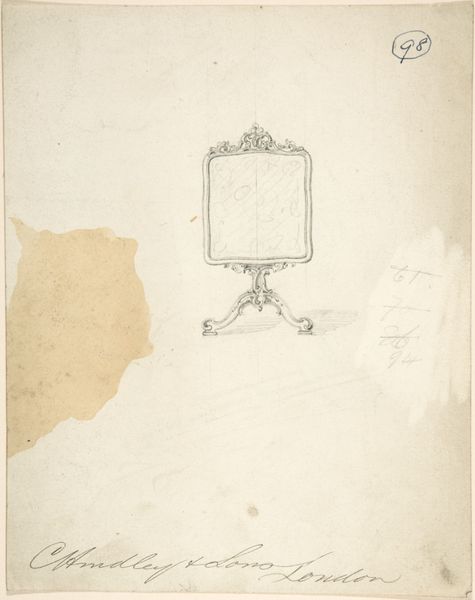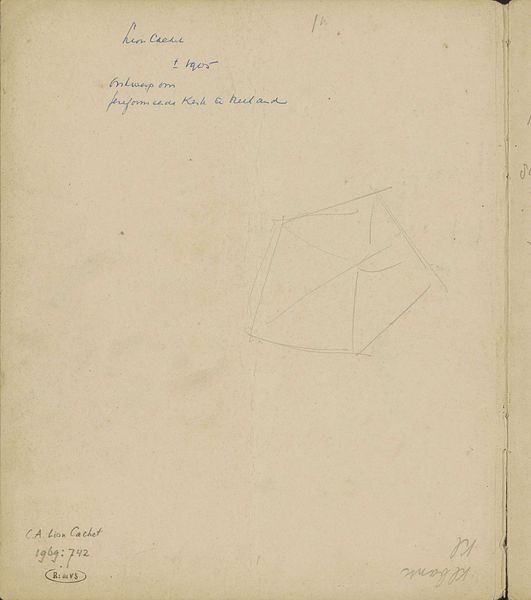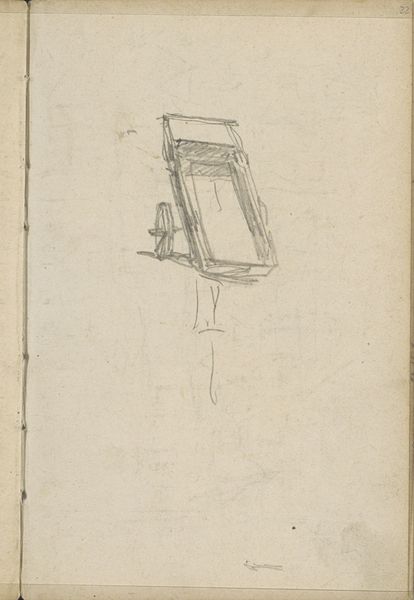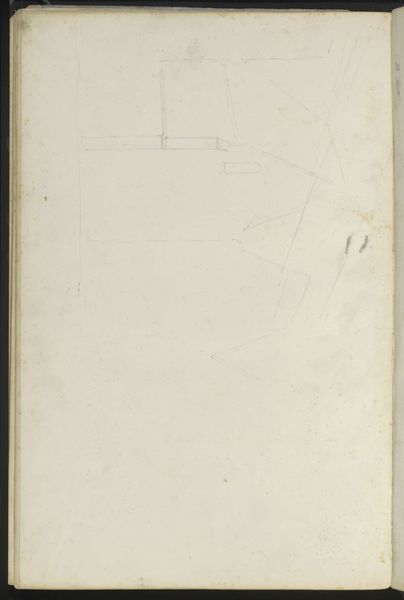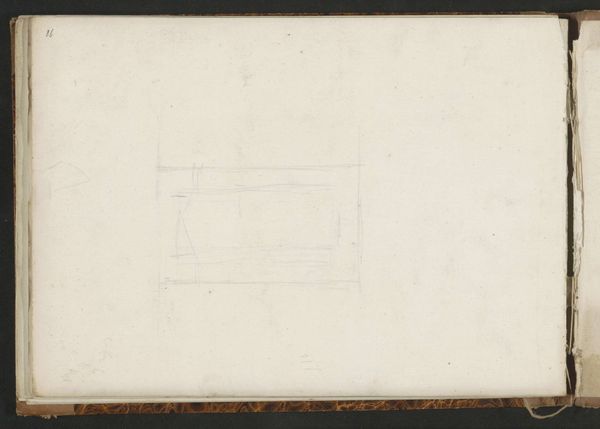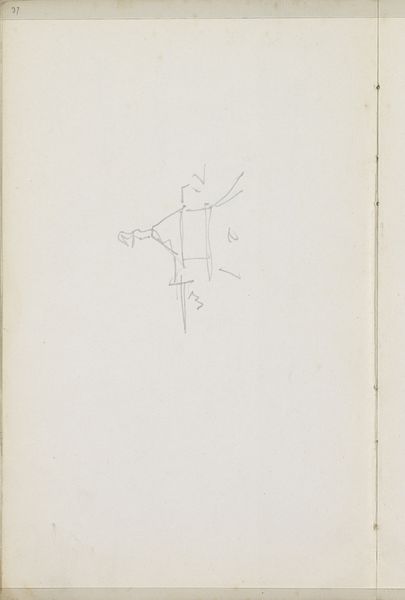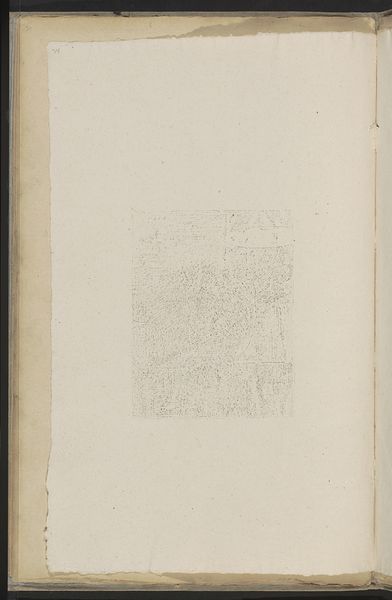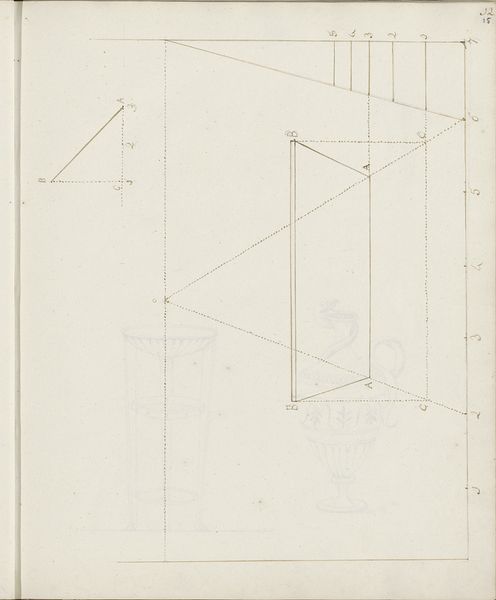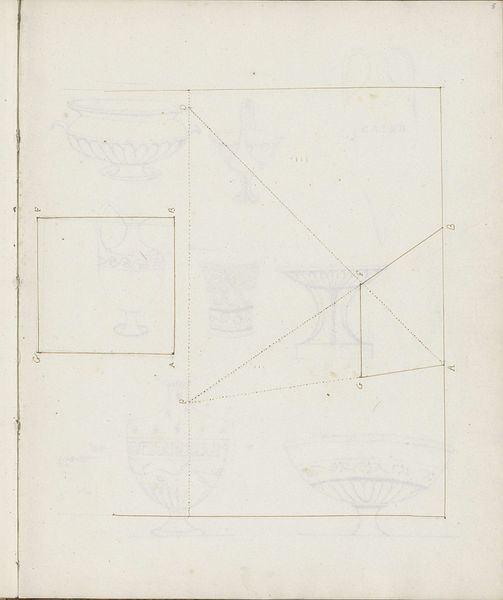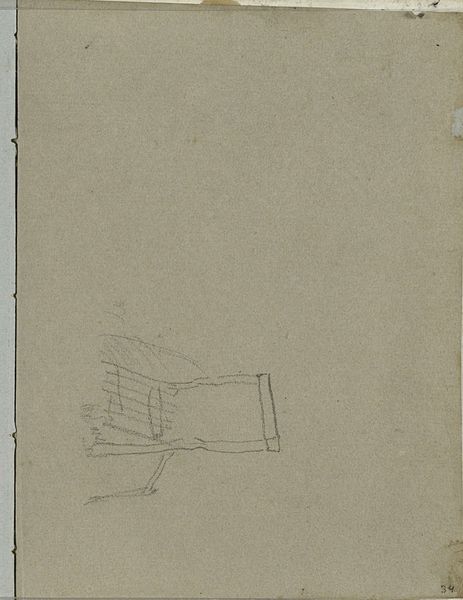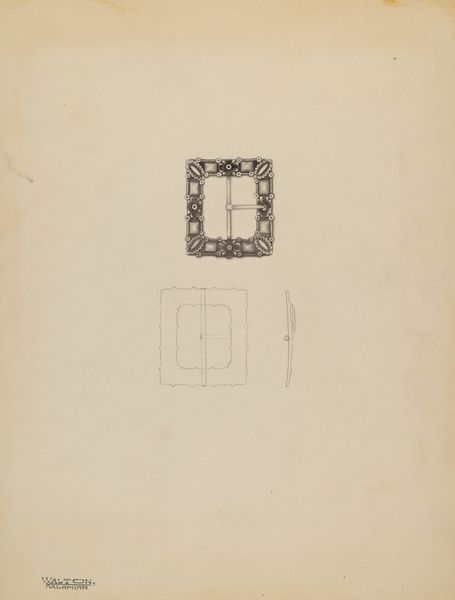
drawing, pencil
#
drawing
#
form
#
geometric
#
pencil
#
realism
Dimensions: 215 mm (height) x 130 mm (width) (bladmaal)
Editor: This is P.C. Skovgaard's "En kube," a pencil drawing from 1872. There’s something stark and a little unsettling about this simple cube floating on the page. What do you see in this piece? Curator: I see an exploration of form and, perhaps more interestingly, the societal implications of representing the objective world. A cube, in its rigid geometry, signifies order, control, and, arguably, the masculine ideal that dominated 19th-century European thought. Editor: Masculine ideal? How so? Curator: Think about it. The cube is about structure, rationality, and imposed form. In Skovgaard’s time, these characteristics were closely tied to the idea of progress and civilization, notions deeply entangled with patriarchal power structures. Why choose a cube when nature is full of irregular, organic forms? Editor: That's a perspective I hadn't considered. It challenges the purely aesthetic reading. Does the incompleteness of the drawing, the fact that it’s just an outline, complicate this interpretation? Curator: Absolutely. The incompleteness can be seen as a critique of the very notion of a fixed, imposed order. Skovgaard acknowledges the patriarchal structures but perhaps also hints at their inherent instability, their ultimately unsustainable nature. What does this imply about Skovgaard? Was this artwork simply a harmless study or was it a commentary about art in society? Editor: That’s given me so much to think about. I went in seeing a basic drawing, but I now realize the choice of something as seemingly simple as a cube can reflect deeper social and political undercurrents. Curator: Precisely! Art always engages with a broader discourse; it is seldom an innocent object. It really helps to ask what is not represented or considered.
Comments
No comments
Be the first to comment and join the conversation on the ultimate creative platform.
